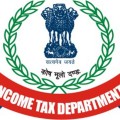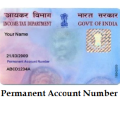Black Money (Undisclosed Foreign Income and Assets) and Imposition of Tax Rules, 2015
GOVERNMENT OF INDIA
MINISTRY OF FINANCE
(DEPARTMENT OF REVENUE)
Notification No. 58/2015
Dated- 2nd of July, 2015
G.S.R. 529 (E).– In exercise of the powers conferred by sub-sections (1) and (2) of section 85 of the Black Money (Undisclosed Foreign Income and Assets) and Imposition of Tax Act, 2015 (22 of 2015), the Central Board of Direct Taxes with the approval of the Central Government hereby makes the following rules, namely:-
- Short title and commencement. ─(1) These rules may be called the Black Money (Undisclosed Foreign Income and Assets) and Imposition of Tax Rules, 2015.
(2) They shall come into force on the date of their publication in the Official Gazette.
- Definitions. ─(1) In these rules, unless the context otherwise requires,-
(a) “Act” means the Black Money (Undisclosed Foreign Income and Assets) and Imposition of Tax Act, 2015 (22 of 2015);
(b) “Chapter” means a Chapter of the Act;
(c) “Form” means a Form appended to these rules;
(d) “Income-tax Act” means the Income-tax Act, 1961 (43 of 1961);
(e) “section” means a section of the Act.
(2) Words and expressions used and not defined in these rules but defined in the Act, the Income-tax Act or the rules made thereunder, shall have the meanings respectively assigned to them in those Acts and rules.
- Fair market value.─ (1) For the purposes of sub-section (2) of section 3 of the Act, the fair market value of the assets shall be determined in the following manner, namely:-
(a) value of bullion, jewellery or precious stone shall be the higher of,-
(I) its cost of acquisition; and
(II) the price that the bullion, jewellery or precious stone shall ordinarily fetch if sold in the open market on the valuation date for which the assessee may obtain a report from a valuer recognised by the Government of a country or specified territory outside India or any of its agencies for the purpose of valuation of bullion, jewellery or precious stone under any regulation or law;
(b) valuation of archaeological collections, drawings, paintings, sculptures or any work of art (hereinafter referred to as artistic work) shall be the higher of,-
(I) its cost of acquisition; and
(II) the price that the artistic work shall ordinarily fetch if sold in the open market on the valuation date for which the assessee may obtain a report from a valuer recognised by the Government of a country or specified territory outside India or any of its agencies for the purpose of valuation of artistic work under any regulation or law;
(c) valuation of shares and securities,-
(I) the fair market value of quoted share and securities shall be the higher of,-
(i) its cost of acquisition; and
(ii) the price as determined in the following manner, namely:-
(A) the average of the lowest and highest price of such shares and securities quoted on any established securities market on the valuation date; or
(B) where on the valuation date there is no trading in such shares and securities on any established securities market, average of the lowest and highest price of such shares and securities on any established securities market on a date immediately preceding the valuation date when such shares and securities were traded on such securities market;
(II) the fair market value of unquoted equity shares shall be the higher of,-
(i) its cost of acquisition; and
(ii) the value, on the valuation date, of such equity shares as determined in the following manner, namely:-
the fair market value of unquoted equity shares = (A+B–L)/ (PE) x (PV),
where,
A= book value of all the assets (other than bullion, jewellery, precious stone, artistic work, shares, securities and immovable property) as reduced by,- (i) any amount of income-tax paid, if any, less the amount of income-tax refund claimed, if any, and (ii) any amount shown as asset including the unamortised amount of deferred expenditure which does not represent the value of any asset;
B= fair market value of bullion, jewellery, precious stone, artistic work, shares, securities and immovable property as determined in the manner provided in this rule;
L= book value of liabilities, but not including the following amounts, namely:-
(i) the paid-up capital in respect of equity shares;
(ii) the amount set apart for payment of dividends on preference shares and equity shares;
(iii) reserves and surplus, by whatever name called, even if the resulting figure is negative, other than those set apart towards depreciation;
(iv) any amount representing provision for taxation, other than amount of income-tax paid, if any, less the amount of income-tax claimed as refund, if any, to the extent of the excess over the tax payable with reference to the book profits in accordance with the law applicable thereto;
(v) any amount representing provisions made for meeting liabilities, other than ascertained liabilities;
(vi) any amount representing contingent liabilities other than arrears of dividends payable in respect of cumulative preference shares;
PE = total amount of paid up equity share capital as shown in the balance-sheet;
PV= the paid up value of such equity shares;
(III) the fair market value of unquoted share and security other than equity share in a company shall be the higher of,-
(i) its cost of acquisition; and
(ii) the price that the share or security shall ordinarily fetch if sold in the open market on the valuation date for which the assessee may obtain a report from a valuer recognised by the Government of a country or specified territory outside India or any of its agencies for the purpose of valuation of share and security under any regulation or law;
(d) the fair market value of an immovable property shall be higher of,-
(I) its cost of acquisition; and
(II) the price that the property shall ordinarily fetch if sold in the open market on the valuation date for which the assessee may obtain a valuation report from a valuer recognised by the Government of a country or specified territory outside India in which the property is located or any of its agencies for the purpose of valuation of immovable property under any regulation or law;
(e) value of an account with a bank shall be,-
(I) the sum of all the deposits made in the account with the bank since the date of opening of the account; or
(II) where a declaration of such account has been made under Chapter VI and the value of the account as computed under sub-clause (I) has been charged to tax and penalty under that Chapter, the sum of all the deposits made in the account with the bank since the date of such declaration:
Provided that where any deposit is made from the proceeds of any withdrawal from the account, such deposit shall not be taken into consideration while computing the value of the account.
(f) value of an interest of a person in a partnership firm or in an association of persons or a limited liability partnership of which he is a member shall be determined in the manner specified in clause (g).
(g) The net asset of the firm, association of persons or limited liability partnership on the valuation date shall first be determined and the portion of the net asset of the firm, association of persons or limited liability partnership as is equal to the amount of its capital shall be allocated among its partners or members in the proportion in which capital has been contributed by them and the residue of the net asset shall be allocated among the partners or members in accordance with the agreement of partnership or association for distribution of assets in the event of dissolution of the firm or association, or, in the absence of such agreement, in the proportion in which the partners or members are entitled to share profits and the sum total of the amount so allocated to a partner or member shall be treated as the value of the interest of that partner or member in the partnership or association.
Explanation.- For the purposes of this clause the net asset of the firm, association of persons or limited liability partnership shall be (A + B – L), which shall be determined in the manner provided in sub-clause (II) of clause (c).
(h) valuation of any other asset shall be higher of,-
(I) its cost of acquisition or the amount invested; and
(II) the price that the asset would fetch if sold in the open market on the valuation date in an arm’s-length transaction.
(2) Notwithstanding anything contained in sub-rule (1), where an asset (other than a bank account) was transferred before the valuation date the fair market value of such asset shall be higher of its cost of acquisition and the sale price:
Provided that where such asset was transferred without consideration or inadequate consideration before the valuation date, the fair market value of the asset shall be higher of its cost of acquisition and the fair market value on the date of transfer.
(3) Where a new asset has been acquired or made out of consideration received on account of transfer of an old asset or withdrawal from a bank account, then the fair market value of the old asset or the bank account, as the case may be, determined in accordance with sub-rule (1) and sub-rule (2) shall be reduced by the amount of the consideration invested in the new asset.
Illustration
A house property (H1) located outside India was bought in 1997 for twenty lakh rupees. It was sold in 2001 for twenty five lakh rupees which were deposited in a foreign bank account (BA). In 2002 another house property (H2) was bought for thirty lakh rupees. The investment in H2 was made through withdrawal from BA. H2 has not been transferred before the valuation date and its value on the valuation date is fifty lakh rupees. Assuming that the value of BA as computed under Rule 3(1)(e) is seventy lakh rupees, the fair market value (FMV) of the assets shall be as below:
FMV of H1: (Higher of ₹ 20 lakh and 25 lakh) – ₹ 25 lakh (invested in BA) = Nil
FMV of BA: ₹ 70 lakh – ₹ 30 lakh (invested in H2) = ₹ 40 lakh
FMV of H2: (Higher of ₹ 30 lakh and 50 lakh) = ₹ 50 lakh
(4) The fair market value of an asset determined in a currency which is one of the permitted currencies designated by the Reserve Bank of India under the Foreign Exchange Management Regulations, shall be converted into Indian currency as per the reference rate of the Reserve Bank of India on the date of valuation.
(5) Where the fair market value of an asset is determined in a currency other than one of the permitted currencies designated by the Reserve Bank of India, then, such value shall be converted into United States Dollar on the date of valuation as per the rate specified by the Central Bank of the country or jurisdiction in which the asset is located and such value in United States Dollar shall be converted into Indian currency as per the reference rate of the Reserve Bank of India on the date of valuation:
Provided that where the Central Bank of the country or jurisdiction in which the asset is located does not specify the rate of conversion from its local currency to United States Dollar then such rate shall be the one as specified by any other bank regulated under the laws of that country or jurisdiction.
Explanation 1.- For the purposes of this rule,-
(a) “established securities market” means an exchange that is officially recognised and supervised by a Governmental entity in which the market is located and that has a meaningful annual value of shares traded on the exchange;
(b) “meaningful annual value of shares traded on the exchange” with respect to an exchange means it has an annual value of shares traded on the exchange (or a predecessor exchange) exceeding one billion United States Dollar during each of the three calendar years immediately preceding the calendar year in which the determination is being made;
(c) “meaningful volume of trading on an on-going basis” with respect to each class of shares means,- (i) trades in each such class are effected, other than in de minimis quantities, on one or more established securities markets on at least sixty business days during the prior calendar year; and (ii) the aggregate number of shares in each such class that are traded on such market or markets during the prior year are at least ten percent. of the average number of shares outstanding in that class during the prior calendar year;
(d) “quoted share or security” means the share or security which has a meaningful volume of trading on an ongoing basis on an established securities market and is regularly quoted by dealers where they actively do offer to, and in fact do, purchase the share from, and sell the share to, customers who are not related to the dealer in the ordinary course of a business;
(e) “unquoted share and security” in relation to share or security means share or security which is not a quoted share or security.
Explanation 2.- For the purpose of determining the market value as on valuation date referred to in in sub-rule (1), and for the purpose of conversion into Indian currency or conversion of foreign currency into United States Dollar and thereafter into Indian currency, the date shall be-
(a) in respect of asset declared under section 59 of the Act, the 1st day of July, 2015;
(b) in any other case, the 1st day of April of the previous year.
- Tax authorities.-For the purposes of section 8, the tax authorities shall be the Assessing Officer, Joint Commissioner, Commissioner (Appeals), Commissioner or Principal Commissioner, Chief Commissioner or Principal Chief Commissioner.
- Notice of demand. ─Where any tax, interest or penalty is payable in consequence of any order passed under the provisions of the Act, the Assessing Officer shall serve upon the assessee a notice of demand in Form 1 specifying the sum so payable.
- Appeal to Commissioner (Appeals). ─(1) An appeal under sub-section (1) of section 15 to the Commissioner (Appeals) shall be made in Form 2.
(2) The form of appeal referred to in sub-rule (1), the grounds of appeal and the form of verification appended thereto relating to an assessee shall be signed and verified by the person who is authorised to sign the return of income under section 140 of the Income-tax Act, as applicable to the assessee.
(3) Every appeal filed under sub-section (1) of section 15 shall be accompanied by a fee of ten thousand rupees.
(4) No appeal under sub-section (1) of section 15 shall be admitted unless at the time of filing of the appeal the assessee has paid the tax alongwith penalty and interest thereon on the amount of liability which has not been objected to by the assessee.
- Appeal to Appellate Tribunal. ─(1) An appeal under sub-section (1) of section 18 to the Appellate Tribunal shall be made in Form 3, and where the appeal is made by the assessee, the form of appeal, the grounds of appeal and the form of verification appended thereto shall be signed by the person specified in sub-rule (2) of rule 6.
(2) The memorandum of cross-objections under sub-section (4) of section 18 to the Appellate Tribunal shall be made in Form 4, and where the memorandum of cross objection is made by the assessee, the form of memorandum of cross-objections, the grounds of cross-objections and the form of verification appended thereto shall be signed by the person specified in sub-rule (2) of rule 6.
(3) Every appeal filed under sub-section (1) of section 18 shall be accompanied by a fee of twenty five thousand rupees.
- Form of tax arrears.-A statement of tax arears under section 31 or section 33 shall be drawn up by the Tax Recovery Officer in Form 5.
- Declaration of undisclosed asset located outside India under section 59.-(1) A declaration in respect of any undisclosed asset located outside India under section 59 of the Act shall be made in Form 6.
(2) The Principal Commissioner or the Commissioner shall grant an acknowledgement in Form 7 to the declarant within fifteen days of the submission of proof of payment of tax alongwith penalty by the declarant under sub-section (2) of section 63 of the Act in respect of the undisclosed asset located outside India.
- Educational qualifications.-The educational qualifications for the purpose of clause (f) of sub-section (3) of section 78 shall be the same as those prescribed in rule 51 of the Income-tax Rules, 1962.
- Authority in certain cases.-For the purposes of clause (c) of sub-section (4) of section 78, the authority shall be the Principal Chief Commissioner or Chief Commissioner or Principal Commissioner or Commissioner having jurisdiction over the case in the proceedings connected with which the tax practitioner is alleged to be guilty of misconduct.
- Rounding off of income, value of asset and tax. ─For the purpose of section 79 the amount of undisclosed foreign income and asset computed in accordance with the Act and any amount payable or receivable by the assessee under the Act shall be rounded off to the nearest multiple of one hundred rupees or ten rupees, as the case may be and for this purpose, where such amount contains a part of a rupee consisting of paise then, if such part is fifty paise or more, it shall be increased to one rupee and if such part is less than fifty paise it shall be ignored.
Forms Forming Part of above Notification
| Particulars | Form |
| Notice of demand | Form 1 |
| Appeal to Commissioner (Appeals) | Form 2 |
| Appeal to Appellate Tribunal | Form 3 |
| The memorandum of cross-objections | Form 4 |
| Form of tax arrears | Form 5 |
| Declaration of undisclosed asset located outside India | Form 6 |
| Acknowledgement by The Principal Commissioner or the Commissioner | Form 7 |
No. 133/33/2015-TPL
(Gaurav Kanaujia)
Director to the Government of India
Tag: Black Money Taxation Rules 2015





